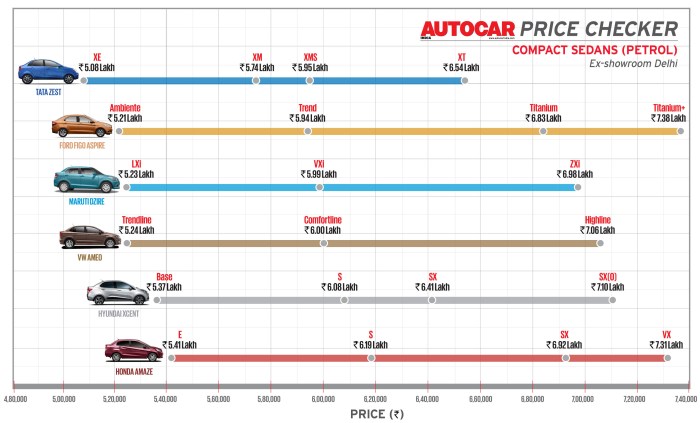New Car Price Check A Comprehensive Guide
Understanding New Car Price Check Search Intent
The search phrase “new car price check” reveals a user actively engaged in the car-buying process. Understanding the nuances behind this search is crucial for providing relevant information and optimizing online resources. This involves analyzing the motivations, expectations, and demographics of potential buyers.
Reasons Behind a “New Car Price Check” Search
Users search for “new car price check” for a variety of reasons, primarily driven by their need for information before making a significant purchase. They might be comparing prices across different models, dealerships, or regions. Some may be researching specific features or trims to determine their budget.
Types of Car Buyers
This search query attracts a diverse range of car buyers. First-time buyers often use this search to understand the market and establish a realistic budget. Upgraders are looking for pricing information on newer models with improved features or technology. Those replacing damaged vehicles also perform price checks to assess replacement costs. Finally, even experienced car buyers utilize price checks to compare deals and negotiate effectively.
User Expectations
Users performing this search generally expect to find accurate and up-to-date pricing information. They anticipate finding a range of prices for different models and trims, alongside details on additional fees and taxes. Transparency and ease of comparison are key expectations.
User Profile Table
| User Type | Search Motivation | Price Range Expectation | Desired Car Features |
|---|---|---|---|
| First-time Buyer | Establish budget, understand market | $15,000 – $25,000 | Fuel efficiency, reliability, safety features |
| Upgrader | Compare new models, improve features | $30,000 – $50,000 | Advanced safety tech, better fuel economy, larger cargo space |
| Replacement Buyer | Find comparable replacement vehicle | Similar to previous vehicle’s price | Similar features and functionality to previous vehicle |
| Experienced Buyer | Negotiate best price, compare deals | Competitive market price | Specific features and options based on needs |
Sources of New Car Pricing Information
Several online resources provide new car pricing information. However, the accuracy and completeness of this information vary significantly. Understanding these differences is crucial for making informed purchasing decisions.
Websites and Resources
Popular websites for checking new car prices include Kelley Blue Book (KBB), Edmunds, TrueCar, and the manufacturers’ own websites. Each offers a slightly different approach to pricing, including MSRP, dealer pricing, and consumer reviews.
Comparison of Information
While all these websites aim to provide accurate pricing, differences exist. KBB and Edmunds often provide detailed reviews and comparisons alongside pricing. TrueCar focuses on connecting buyers with dealers for negotiated prices. Manufacturer websites typically display the MSRP, which might not reflect actual market prices.
Reliability and Potential Biases

Source: haymarketindia.net
The reliability of pricing information depends on several factors, including data sources, update frequency, and potential biases. Some websites may receive incentives from dealers, influencing the displayed prices. It’s always wise to compare prices across multiple sources and consider market conditions.
Online Price Check Flowchart
A user might follow these steps to check new car prices online:
- Identify desired car make and model.
- Visit multiple price-checking websites (e.g., KBB, Edmunds, TrueCar).
- Compare MSRP and dealer pricing across different locations.
- Consider additional fees (taxes, destination charges).
- Analyze consumer reviews and ratings.
- Refine search based on price and features.
Factors Influencing New Car Prices
The price of a new car is determined by a complex interplay of factors. Understanding these factors helps buyers to interpret pricing information and make informed decisions.
Factors Determining MSRP and Market Price
- Manufacturer’s Suggested Retail Price (MSRP): This is the base price set by the manufacturer, influenced by production costs, features, and market positioning.
- Market Demand and Supply: High demand and low supply (e.g., due to supply chain disruptions) can significantly inflate prices.
- Economic Conditions: Inflation, interest rates, and overall economic stability impact consumer spending and vehicle pricing.
- Options and Packages: Additional features, packages, and trim levels increase the final price.
- Dealer Markup: Dealers often add a markup to the MSRP, leading to variations in final prices.
- Taxes and Fees: Sales tax, registration fees, and destination charges add to the overall cost.
Negotiating New Car Prices
Armed with thorough price check information, buyers can effectively negotiate lower prices. Knowing the market value and understanding dealer tactics are essential for a successful negotiation.
Negotiation Strategies
Effective negotiation involves presenting research-based arguments, calmly addressing dealer tactics, and focusing on the total price (including fees). Buyers should be prepared to walk away if a satisfactory deal isn’t reached.
Countering Dealer Tactics
Dealers may employ various tactics, such as highlighting add-on packages or focusing on monthly payments. Buyers should counter these by focusing on the overall price, highlighting competitive offers, and negotiating individual items separately.
Leveraging Price Check Information
Price check information serves as a powerful tool during negotiation. Presenting evidence of lower prices from other dealers or websites strengthens the buyer’s position and encourages the dealer to offer a competitive deal.
Successful Negotiation Scenario
Imagine a buyer researching a specific car model and finding its average price to be $25,000 across multiple websites. The dealer initially offers $28,000. By presenting the research and highlighting the lower prices, the buyer successfully negotiates the price down to $26,000, a more acceptable figure.
Visual Representation of Price Data: New Car Price Check

Source: co.id
Effective visualization of price data enhances the user experience of a car price comparison tool. Clear and intuitive charts and interactive elements improve decision-making.
User-Friendly Visual Elements
A user-friendly tool should employ clear labels, consistent color schemes, and intuitive navigation. Interactive elements like filtering, sorting, and zooming capabilities improve usability.
Mock-up Chart, New car price check
A bar chart could effectively compare prices across different car models and trim levels. The x-axis would represent the car models (e.g., Model A, Model B, Model C), and the y-axis would represent the price. Each bar could be color-coded by trim level (e.g., base model – blue, mid-level – green, top-level – red). Data labels would clearly display the price for each bar.
Interactive Elements
Interactive elements could include: a filter to narrow results by price range, features, or fuel efficiency; a sorting option to arrange cars by price, fuel economy, or other criteria; and a zoom function to examine specific details.
Helpful Answers
What is the best time of year to buy a new car?
Generally, the end of the month and the end of the quarter are often considered good times to negotiate, as dealerships aim to meet sales quotas.
How much should I put down on a new car?
The ideal down payment varies depending on your financial situation and the loan terms. A larger down payment typically results in lower monthly payments and interest charges.
What are dealer fees, and are they negotiable?
Dealer fees cover administrative and processing costs. While some fees are non-negotiable, others may be open to discussion. It’s advisable to clarify all fees upfront.
Can I use a price check from one dealership to negotiate with another?
Absolutely. Using price quotes from competing dealerships is a powerful negotiation tool to leverage better deals.





















